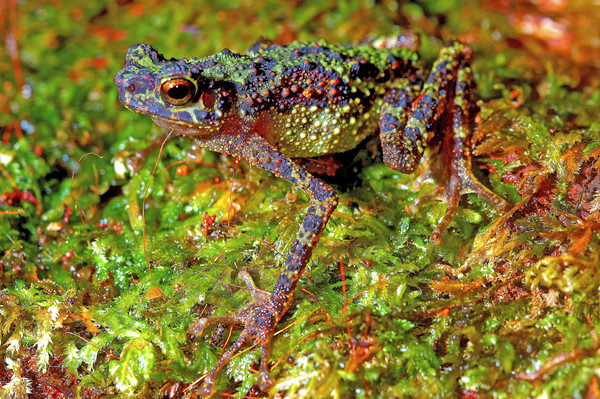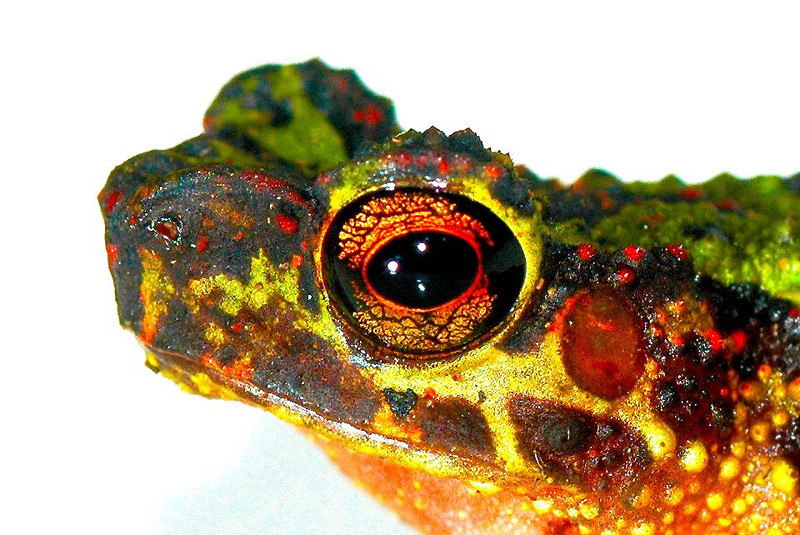Source:
http://whyevolutionistrue.wordpress.com/2011/07/15/hypnotoad/
The Sambas Stream Toad, or Bornean Rainbow Toad as it’s also called (Ansonia latidisca) was previously known from only three individuals, and was last seen in 1924—the same year Vladimir Lenin died, and Greece declared itself a republic. Prior to the rediscovery, only illustrations of the mysterious and long-legged toad existed, after collection by European explorers in the 1920s.

Initial searches by Dr. [Indranell] Das and team took place during evenings after dark along the 1,329 m. high rugged ridges of the Gunung Penrissen range of Western Sarawak, a natural boundary between Malaysia’s Sarawak State and Indonesia’s Kalimantan Barat Province. The team’s first expeditions proved fruitless in their first several months, but the team did not give up. The area had barely been explored in the past century, with no concerted efforts to determine whether the species was still alive. So Das changed his team’s strategy to include higher elevations and they resumed the search.
And then one night, Mr. Pui Yong Min, one of Dr Das’s graduate students found a small toad 2m up a tree. When he realized it was the long-lost toad, Dr. Das expressed relief and near disbelief at the discovery before his eyes.

The discovery is part of the Global Search for Lost Amphibians, which is run by Conservation International (CI) and the IUCN Amphibian Specialist Group (ASG), with support from Global Wildlife Conservation (GWC). It sought to document the survival status and whereabouts of threatened species of amphibians which they had hoped were holding on in a few remote places. The search – a first of its kind – took place between August and December 2010 in 21 countries, on five continents, and involved 126 researchers.”